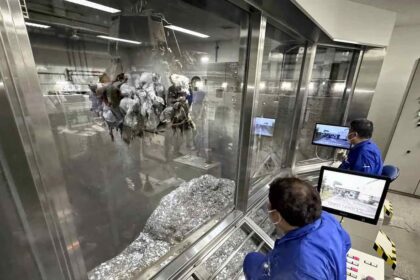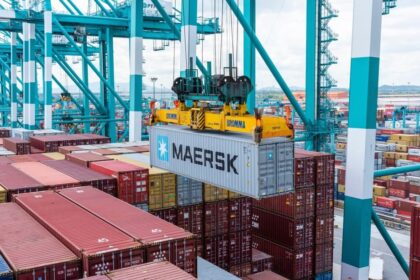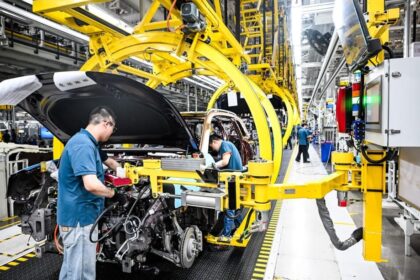Indonesia’s Waste Management Crisis: An Urgent National Challenge
Indonesia, the world’s fourth most populous country, is facing a mounting waste management crisis. With only about 10 percent of its waste being properly processed, the nation’s landfills are rapidly approaching capacity, and environmental pollution is reaching alarming levels. Unless urgent and radical measures are taken, experts warn that landfills across the country could reach their maximum capacity by 2030, threatening public health, the environment, and Indonesia’s global commitments to sustainability.
- Indonesia’s Waste Management Crisis: An Urgent National Challenge
- How Did Indonesia Get Here? Understanding the Waste Management Gap
- Open Burning: A Widespread and Dangerous Practice
- Plastic Waste and Microplastics: A Growing Environmental Threat
- Food Waste: The Hidden Giant in Indonesia’s Trash
- Government Response: New Targets, Regulations, and Technologies
- Innovations and the Role of the Private Sector
- Barriers to Progress: Infrastructure, Governance, and Public Awareness
- Regional and Global Context: Lessons and Opportunities
- In Summary
Deputy Environment Minister Diaz Hendropriyono recently highlighted the gravity of the situation, noting that Indonesia’s critically low waste management rate results in 34 million tonnes of waste polluting the environment annually. The consequences are far-reaching, with microplastics now detected in rivers, water sources, and even in human placentas and breast milk. The government, business sector, and public must work together to overhaul the waste management system before it is too late.
How Did Indonesia Get Here? Understanding the Waste Management Gap
Indonesia generates an estimated 56.6 million tonnes of waste each year, with about 10.8 million tonnes—nearly 20 percent—being plastic. Despite ambitious government targets, the actual rate of waste management remains stubbornly low. According to Environment Minister Hanif Faisol Nurofiq, inspections of 343 landfills revealed that only 9 to 10 percent of waste is effectively managed, a figure calculated by evaluating the availability and capacity of recycling and recovery facilities at each site.
Most landfills in Indonesia still use an open dumping system, which not only accelerates the filling of landfill space but also significantly contributes to methane emissions—a greenhouse gas that traps up to 34 times more heat than carbon dioxide over a 100-year period. This makes open dumping a major contributor to global warming.
In 2017, then-president Joko Widodo issued a presidential regulation aiming for 100 percent waste management by 2025, with 70 percent of waste to be managed through sorting, collection, and conversion into raw materials or energy, and the remaining 30 percent to be reduced through recycling. However, as of 2023, only 60.2 percent of waste was reported as properly managed, and a recent recalibration of statistics—excluding unmanaged landfills—slashed the figure to just 39 percent.
Java Island leads the country with a recycling rate of 31 percent, followed by Bali-Nusa Tenggara at 22.5 percent and Sumatra at 12 percent. The national recycling rate for plastic, however, is only 22 percent, far below what is needed to stem the tide of pollution.
Open Burning: A Widespread and Dangerous Practice
One of the most troubling aspects of Indonesia’s waste crisis is the widespread practice of open burning. With public waste disposal and management facilities scarce, nearly half (48 percent) of Indonesian households resort to burning their waste, despite the practice being prohibited. This releases black carbon—a potent climate pollutant—and so-called “forever chemicals” that can travel long distances and harm human health.
According to the World Risk Poll by Lloyd’s Register Foundation, open burning is a core factor in the estimated one million deaths annually in lower-income countries from diseases related to mismanaged waste. Nancy Hey, Lloyd’s director of evidence and insight, emphasizes the urgent need for better collection infrastructure and controlled disposal to replace hazardous open burning.
Plastic Waste and Microplastics: A Growing Environmental Threat
Plastic waste is a particularly acute problem in Indonesia and across Southeast Asia. The region is a global hotspot for plastic pollution, with Indonesia ranking among the top contributors to marine plastic debris. The durability of plastics means they persist in the environment for decades, fragmenting into microplastics that contaminate water, soil, and food chains.
Scientific studies have found microplastics in Indonesian rivers, coastal waters, and even in the bodies of marine organisms and humans. The accumulation of plastic waste in open landfills and waterways not only threatens biodiversity but also poses ecotoxicological risks and undermines food safety.
Efforts to manage plastic waste are hampered by limited infrastructure, especially outside urban centers. Only about 10 percent of Indonesia’s plastic waste is recycled, with the rest ending up in landfills, being burned, or leaking into the environment. The situation has been exacerbated by the global shift in plastic waste trade following China’s 2017 ban on plastic imports, which redirected large volumes of low-quality plastic waste to Southeast Asia, including Indonesia.
Food Waste: The Hidden Giant in Indonesia’s Trash
While plastics grab headlines, food waste is the dominant component of Indonesia’s domestic waste stream. An estimated 20.8 million tonnes of food waste are generated annually. Current treatment methods—mainly composting and landfilling—are inadequate, with landfills having the highest environmental impact due to methane emissions and leachate pollution.
Emerging technologies such as black soldier fly larvae composting, anaerobic digestion, and thermal treatments offer promise, but their adoption remains limited. Integrated and comprehensive regulation, as well as investment in both small- and large-scale treatment technologies, are needed to address the food waste challenge effectively.
Government Response: New Targets, Regulations, and Technologies
Recognizing the scale of the crisis, the Indonesian government has recalibrated its waste management targets. Under President Prabowo Subianto, the goal of achieving 100 percent waste management has been extended to 2029. The new National Medium-Term Development Plan (RPJMN) prioritizes shutting down open dumping at 343 landfills, with an initial focus on 37 sites to be completed within six months.
To modernize waste management, the government is preparing a new Presidential Regulation that will consolidate and update existing rules on marine waste, waste-to-energy, and household waste management. The use of advanced technologies, particularly waste-to-energy (WTE) plants, is being promoted for large cities where traditional methods are insufficient. These plants can process all types of waste at high temperatures, converting them into electricity and reducing landfill volumes.
The Ministry of Energy and Mineral Resources estimates that Indonesia has the potential to generate up to 3 gigawatts of electricity from waste. However, the economic viability of WTE plants depends on subsidies and regulatory support, as the cost of producing electricity from waste currently exceeds the average market price.
Innovations and the Role of the Private Sector
While government action is crucial, private sector innovation is playing an increasingly important role in Indonesia’s waste management landscape. Companies like Waste4Change are pioneering end-to-end waste management solutions, focusing on recycling, digital integration, and collaboration with informal waste collectors. Waste4Change, for example, manages over 8,000 tons of waste annually and aims to scale up to 2,000 tons per day within five years.
Digital platforms and apps are also transforming the sector. Apps such as Waste4Change, E-Recycle, Rapel, Kepul, and Octopus connect households and businesses with waste collectors, incentivize recycling, and provide traceability for waste streams. These platforms help formalize the role of informal waste pickers (pemulungs), who collect more plastic waste than government facilities but often work under precarious conditions.
By integrating waste pickers into formal systems, providing training, equipment, and fair compensation, these initiatives not only improve recycling rates but also enhance social welfare. The Ministry of Environment and Forestry is partnering with start-ups and local governments to triple the nation’s waste collection capacity by 2030, recognizing the vital role of the informal sector in achieving national targets.
Barriers to Progress: Infrastructure, Governance, and Public Awareness
Despite these efforts, significant barriers remain. Many waste management facilities, especially in rural and remote areas, are abandoned or underutilized. More than 70 percent of Reduce, Reuse, and Recycle Waste Management Facilities (TPS3R) and 40 percent of Integrated Waste Management Facilities (TPST) are of unknown status or not operational.
Governance challenges, including fragmented responsibilities between national and local governments, insufficient funding, and weak law enforcement, hinder progress. Public awareness and behavior also play a critical role. The linear approach of simply collecting, transporting, and dumping waste persists, and open burning remains widespread due to lack of alternatives.
Experts argue that a systemic approach is needed, prioritizing waste management at the source, improving governance, increasing capacity, and ensuring adequate funding. Information campaigns, law enforcement, and community engagement are essential to shift behaviors and build support for sustainable waste management.
Regional and Global Context: Lessons and Opportunities
Indonesia’s waste crisis is not unique. Southeast Asia as a whole faces similar challenges, with rapid urbanization, population growth, and limited infrastructure driving up waste generation and pollution. Regional cooperation, such as the ASEAN Regional Action Plan for Combatting Marine Debris, aims to address cross-border issues and build capacity for better waste management.
Globally, the shift towards a circular economy—where materials are reused, recycled, and kept in the value chain—offers a pathway to sustainability. Chemical recycling, biodegradable plastics, and upcycling technologies are being explored as alternatives to landfilling and incineration. However, these solutions require investment, regulatory support, and public participation to succeed.
Indonesia’s experience highlights the importance of integrating informal waste collectors, leveraging technology, and fostering collaboration between government, private sector, and civil society. As the country works towards its 2029 target, the lessons learned could inform waste management strategies across the region and beyond.
In Summary
- Indonesia faces a severe waste management crisis, with only about 10 percent of waste properly processed and landfills nearing capacity.
- Open dumping and burning are widespread, contributing to pollution, greenhouse gas emissions, and health risks.
- Plastic waste and microplastics are major environmental threats, with low recycling rates and significant leakage into oceans and waterways.
- Food waste is the largest component of domestic waste, but current treatment methods are inadequate.
- The government has extended its target for 100 percent waste management to 2029 and is promoting new regulations and waste-to-energy technologies.
- Private sector innovation, digital platforms, and integration of informal waste collectors are driving improvements in recycling and waste management.
- Barriers include inadequate infrastructure, governance challenges, and low public awareness.
- Regional cooperation and a shift towards a circular economy are essential for long-term sustainability.












